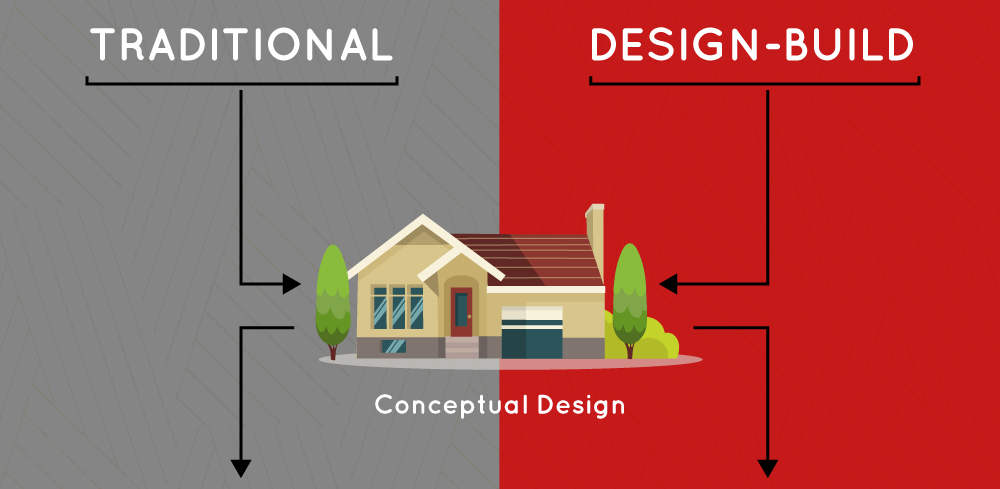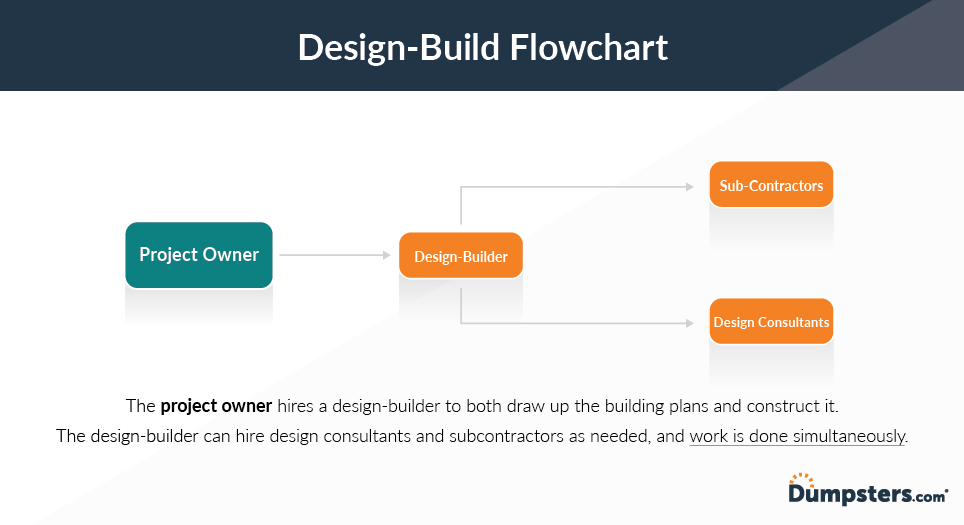Table Of Content

The human error component has largely been taken out of the equation.” So, why can’t every organization use their existing e-bidding platform to evaluate design-build contracts? The point of the article is that they can - if their software is evolving alongside industry demands. Design-build is a contracting approach in which a single entity, the design-builder, assumes responsibility for the design, construction, commissioning, and turnover of a project. The owner hires a design-builder rather than contracting with an architect/design firm separate from the construction company. Typically, the design-builder is contractually responsible and bears the risk for the project.
Using e-Bidding Software for Design-Build Contracts
Open bidding is open to all contractors, while select bidding is only open to certain pre-selected contractors. According to the Design-Build Institute of America, the lead position on the project may be assigned to a general contractor, designer, developer, or as a joint effort. Whomever is in charge selects and follows up with the appropriate subcontractors for all elements of the job, from start to finish.
Contract documents
After a design is nearly complete, an owner then selects the contractor by putting the job up for bid and often awarding it to the lowest bidder. In theory, this model means the design team produces final, ready-to-build plans before contractors ever get involved. Once these plans are polished and ready to go, they are handed over to the winning bidder, who then follows the plans to construct the project. With a clear image of subsurface conditions in hand from the outset, design builders can also better allocate utility risk and responsibility in the initial contract. Utility mapping can also reduce some of the the added time pressure of large design build projects, by giving design builders more confidence in their ongoing designs as they begin construction. Integrated project delivery methods allow contractors to point out the missing pieces during design so that the team can optimize the plan for better quality, price, or timing as needed.
Design-Bid-Build Contract
Ultimately, both methods result in a solid building, completed in a timely manner. However, there are some key differences between the two styles that will help you decide which is the best system for your project. The following sections will break down the advantages and disadvantages between design-build and design-bid-build. Learn the differences between these two project delivery methods with our comparison guide.
A variation of this system includes a qualified project manager, who serves as a proxy for the project owner. The reason you want these two to work so closely, if not tied to one another, is primarily due to your budget. The faster you get through the planning stages, the sooner you can start construction, allowing you to keep your schedule tight or extend the construction period to ensure everything is assembled according to your plans. The above is a very general and simplified way to look at the Design-Bid-Build method, but for the sake of comparison, it is a good start to understand the idea behind construction contracting. Each has strengths and challenges and serves different needs and project goals. By considering your project’s specific requirements and priorities, you can choose the right method for your next project.
Akima Subsidiary Books $499M USACE Design-Build Construction Services Contract - GovCon Wire
Akima Subsidiary Books $499M USACE Design-Build Construction Services Contract.
Posted: Thu, 18 Apr 2024 07:00:00 GMT [source]
Having a single point of contact can be a significant advantage or stress relief for the owner. If you are reaching out and talking with various designers and contractors, it will take up a lot of your time. Here, the design team and construction team work as one, promoting increased communication and collaboration. From preliminary drawings to construction activities, it’s all handled by the design-build team. In this article, we will look at design-build vs. design-bid-build projects.
Construction Contract Documents: 9 Key Components

Owners typically select the proposal that provides the best value for the project without sacrificing design original design elements. The owner works with the design team to develop the necessary contract documents such as, drawings, renderings and specifications. Once the design is finished, it is sent out for GCs to bid on the project. It can take at least 2-4 weeks for contractors and subcontractors to price a project. We hope this article has provided you with a basic overview of these delivery methods to help you make the choice that is right for you and your project.
Which method is right for your project?
If you have chosen from a pre-developed set of drawings and the design-builder has experience in constructing from those drawings, you may not need to be too involved in the process. If you have a more custom project, then you would likely be more involved in the development of the design and the construction process. With design bid build, project owners get more control over the design process. The owner’s involvement is required instead of having a single project manager monitoring the design phase. At BB&R Design-Build, we have extensive experience in design-build and design-bid-build methods for various projects. Our team of expert is dedicated to providing quality results that meet our client's unique needs and goals.

The Advantages of Design-Bid-Build
Once the design phase is complete, general contractors bid on the job based on labor and construction costs, which opens the project to the bidding process (and theoretically lowers construction costs due to competition). Design-bid-build is the most traditional project delivery method and appeals to those looking for low-cost bids. Then the owner solicits bids from contractors to perform the documented scope of work. In design build projects, much of the risk is passed on from the project owner to the design-builder. In these types of projects, careful coordination between the project owner and the design-builder is key to keeping down risk pricing.
It may also help meet shorter deadlines because you can overlap the design and construction process. In preparing to pursue a project, a design-builder needs to build a team that inspires confidence in the owner that all the project needs will be met. The design-builder must foster professional relationships that will help move the project forward. If new to the delivery method, the design-builder should commit to the organizational structure and software that will work for the team to complete the project successfully. Project changes can lead to significant turmoil when multiple parties are involved under separate contracts, as each tries to shift the responsibility and increased costs off to the others. The combative nature of the change process can lead to delays and increased costs.
In this article, we will dive into the details of design-build and design-bid-build, exploring the pros and cons of each approach and providing real-life case studies to highlight their effectiveness. The two most common types of delivery methods are Design-Bid Build (DBB), and Design Build (DB). If you’re new to the construction industry, you may have heard of the terms “Design-Build” and “Design-Bid-Build” and wondered what they mean. Simply stated, these terms describe how and when the owner hires different parties to complete the project, how those parties are selected, and how they all work together.
For a less complex project, there may be a more abbreviated design process. This method offers collaboration between designers and builders, creating a solid alignment of project goals and objectives. The construction phase involves building, inspecting, commissioning, and accepting the project. At the conclusion of the construction phase, engineers need to submit updated utility data that may have changed during the project. Regardless of the project delivery method used, clear, consistent organization and accessibility of project information and open communication can help foster understanding and overall project success.
Architect-led agreements are generally used on projects that have a high complexity of design, such as new buildings or remodels. Contractor-led projects usually don’t rely on difficult design, and involve repetitive work, such as infrastructure projects. Regardless of which way the contract is written, the architect and contractor are usually contractually connected, and one of them is connected to the owner and takes point on the project. The design team and the owner evaluate the bids and determine which GC is best to contract with, and once the contract is finalized, construction starts can be scheduled and material and equipment can be ordered.
Many design-build companies have stock designs that they use and then tweak to fit the project owner’s requests. While this is not true of all design-builders, the likelihood of not getting a personalized design is much higher when considering integrated project delivery. While it might not be the cheaper option, design-build costs are often more predictable. The design-builder can wrap the whole price into a solid range that should be pretty close to the final cost, which will allow the project owner to better budget from the start. Design-build versus design-bid-build projects are also characterized by high levels of collaboration and early input from multiple trades. As with any project delivery method, a comprehensive, fair, and unambiguous contract is critical to maintaining relationships and completing a successful project.
Yes, in a design-bid-build approach, the client is more involved in the design process, offering more control over the final product. By integrating subsurface utility mapping into the project delivery process, all stakeholders can set themselves up for a successful project. While a compressed schedule can benefit both owner and design-builder, it does throw a lot of balls in the air for the design-build team. The builders must manage construction while simultaneously consulting on further design. Further, a shortened schedule can impact the risk level for the design-builder, as many unknown factors are in place when the construction begins. The difference between design-build and design-bid-build lies in the relationship and responsibilities of the construction team.

No comments:
Post a Comment